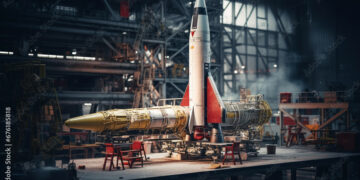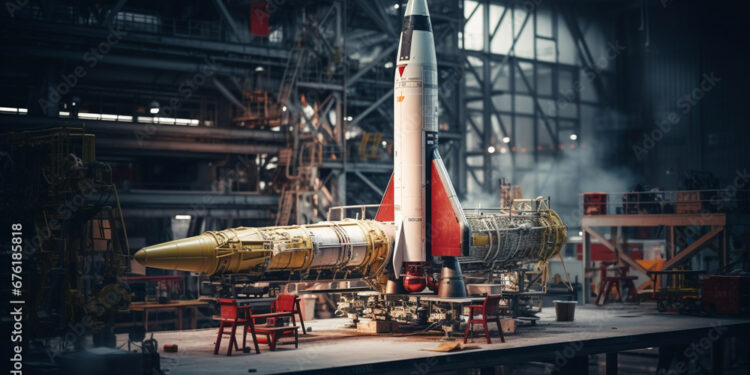In the ever-evolving world of aviation, aerospace composites have emerged as game-changers. These advanced materials are revolutionizing how aircraft are designed and constructed, offering numerous benefits that traditional materials simply can’t match. This article delves into the transformative power of aerospace composites, exploring their properties, advantages, manufacturing processes, and future potential.
Understanding Aerospace Composites
Aerospace composites are materials made from two or more constituent materials with significantly different physical or chemical properties. When combined, they produce a material with characteristics different from the individual components. The primary types of aerospace composites include Polymer Matrix Composites (PMC), Metal Matrix Composites (MMC), and Ceramic Matrix Composites (CMC).
Historically, the development of composites began with the aerospace industry’s need for stronger, lighter materials that could withstand extreme conditions. Over the decades, advances in technology and materials science have led to the sophisticated composites used today in aircraft design.
Benefits of Aerospace Composites in Aircraft Design
Aerospace composites offer a host of benefits that make them indispensable in modern aircraft design:
- Weight Reduction: One of the most significant advantages of aerospace composite is their lightweight nature. This weight reduction translates into improved fuel efficiency, which is crucial for both commercial and military aircraft.
- Enhanced Strength-to-Weight Ratio: Compared to traditional materials like aluminum and steel, aerospace composites have a much higher strength-to-weight ratio. This means they can endure higher loads without adding extra weight.
- Corrosion Resistance: Unlike metals, composites do not rust or corrode. This property extends the lifespan of aircraft components, reducing maintenance costs and downtime.
- Improved Aerodynamics: The flexibility of composites allows for the design of smoother, more aerodynamic shapes, enhancing the overall performance of the aircraft.
- Cost-Effectiveness: While the initial costs of aerospace composites can be high, their durability and reduced maintenance needs make them cost-effective over the long term.
Key Components and Structures Made from Composites
Aerospace composites are used in various parts of an aircraft, including:
- Wings and Control Surfaces: The wings and control surfaces benefit from the lightweight and strong properties of composites, improving fuel efficiency and maneuverability.
- Fuselage Sections: Composites are used in the fuselage to reduce weight and increase the structural integrity of the aircraft.
- Empennage (Tail Section): The tail section, including the vertical and horizontal stabilizers, often uses composites for enhanced performance and durability.
- Interior Components: Seats, overhead bins, and other interior elements are made from composites to reduce weight and improve passenger comfort.
Manufacturing Processes of Aerospace Composites
The production of aerospace composites involves several advanced manufacturing techniques:
- Layup and Curing Processes: In the layup process, layers of composite material are placed in a mold and then cured under heat and pressure to form a solid structure.
- Autoclave and Out-of-Autoclave Methods: Traditional autoclave methods involve curing composites in a pressurized oven, while out-of-autoclave methods use vacuum bags and ovens to achieve similar results at lower costs.
- Advanced Techniques: Techniques like filament winding, pultrusion, and resin transfer molding (RTM) are used to create specific composite structures with precise characteristics.
- Quality Control and Testing: Rigorous testing and quality control measures ensure that composite components meet the stringent safety and performance standards required in the aerospace industry.
Innovations and Advancements in Aerospace Composites
The field of aerospace composites is continuously evolving, with several exciting innovations on the horizon:
- Nanocomposites: Incorporating nanoparticles into composites can enhance their mechanical properties and resistance to damage.
- Smart Composites: These materials have embedded sensors that can monitor the structural health of the aircraft in real-time, providing valuable data on stress, strain, and potential damage.
- Hybrid Composites: Combining different types of fibers and matrix materials can create composites with tailored properties for specific applications.
- Sustainable Materials: Research is ongoing into developing composites from sustainable and renewable sources, reducing the environmental impact of aircraft manufacturing.
Challenges and Limitations
Despite their many advantages, aerospace composite also face several challenges:
- High Initial Costs: The production and processing of composites can be expensive, posing a barrier to their widespread adoption.
- Complex Repair and Maintenance: Composites require specialized techniques for repair and maintenance, which can be more complex than traditional materials.
- Recycling and Environmental Impact: While composites offer many benefits, recycling them is a significant challenge. Developing environmentally friendly disposal methods is crucial.
- Technical Challenges: Large-scale production and integration of composite materials into aircraft structures pose technical hurdles that need to be addressed.
The Future of Aerospace Composites
The future of aerospace composites looks promising, with several trends and innovations set to shape the industry:
- Next-Generation Aircraft: Composites will play a crucial role in the development of next-generation aircraft, including unmanned aerial vehicles (UAVs) and urban air mobility solutions.
- Urban Air Mobility and eVTOL: Electric vertical takeoff and landing (eVTOL) vehicles will rely heavily on composites to achieve the necessary performance and efficiency.
- Sustainability: The push for sustainable aviation will drive the development of eco-friendly composite materials and manufacturing processes.
Conclusion
Aerospace composites are transforming aircraft design, offering unparalleled benefits in terms of weight reduction, strength, and durability. Their application in modern aviation is a testament to the advancements in materials science and engineering. As the industry continues to innovate, the role of aerospace composites will only grow, paving the way for more efficient, sustainable, and high-performing aircraft.


















































